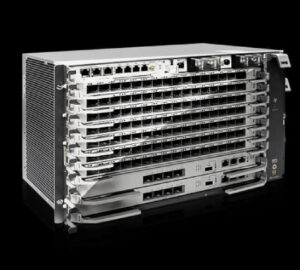
Understanding Optical Line Terminal (OLT): The Backbone of Fiber Networks
Introduction
In today’s bandwidth-hungry world, fiber optic networks are revolutionizing how we connect. At the core of these advanced networks lies the Optical Line Terminal (OLT), the unsung hero that makes high-speed internet, 4K streaming, and cloud services possible. Whether you’re an ISP deploying next-gen services or an enterprise building a future-proof network, understanding OLT technology is crucial.
This comprehensive guide will explore:
- What exactly an OLT is and how it works
- Different types of OLTs and their applications
- Key benefits of OLT technology
- How to choose the right OLT for your needs
What is an Optical Line Terminal (OLT)?
An OLT is the central hardware device in a Passive Optical Network (PON) system that connects the service provider’s core network to multiple end-users through Optical Network Units (ONUs). It serves three primary functions:
- Aggregation – Combines data, voice, and video traffic
- Distribution – Sends signals downstream to subscribers
- Control – Manages bandwidth allocation and network access
Key Components of an OLT
Uplink ports (10G/25G/100G) connecting to the backbone
PON ports (GPON/XGSPON) for fiber distribution
Switching fabric for traffic managemen
Management interface for configuration and monitoring
Types of OLTs and Their Applications
1. GPON OLTs
- Speed: 2.5G downstream/1.25G upstream
- Best for: Residential FTTH deployments
- Advantages: Cost-effective, widely compatible
2. XGSPON OLTs
- Speed: 10G symmetrical
- Best for: Business services, 5G backhaul
- Advantages: Future-proof, low latency
3. EPON OLTs
- Speed: 1G/10G symmetrical
- Best for: Enterprise campuses, municipal networks
- Advantages: Ethernet compatibility, simple management
4. Industrial OLTs
- Features: Ruggedized, wide temperature range
- Best for: Smart cities, transportation networks
- Advantages: Harsh environment operation
Why OLTs are Revolutionizing Networks
Massive Bandwidth: Support hundreds of users simultaneously
Long Reach: Cover distances up to 20km without repeaters
Energy Efficient: Consume 60% less power than traditional equipment
Future-Proof: Easily upgradeable to higher speeds
Cost Effective: Reduce operational expenses by up to 40%
Choosing the Right OLT: Key Considerations
- Service Type: Residential (GPON) vs Business (XGSPON) needs
- Port Density: Number of subscribers to support
- Uplink Capacity: 10G/25G/100G options
- Management Features: CLI, Web, or SDN control
- Redundancy: Dual power supplies, failover protection
Real-World OLT Applications
🏠 FTTH Deployments: Delivering gigabit internet to homes
🏢 Enterprise Networks: Connecting office buildings securely
🏙️ Smart Cities: Powering traffic systems and surveillance
📱 5G Backhaul: Supporting small cell networks
🏭 Industrial IoT: Connecting manufacturing equipment
The Future of OLT Technology
Next-generation OLTs are evolving with:
25G/50G PON capabilities
SDN/NFV integration for software-defined networks
AI-powered analytics for predictive maintenance
Converged access supporting both wired and wireless
Conclusion
As fiber networks become the backbone of digital transformation, OLTs stand as the critical infrastructure enabling this revolution. Whether you’re planning a new deployment or upgrading existing infrastructure, choosing the right OLT technology will determine your network’s performance, scalability, and ROI.
